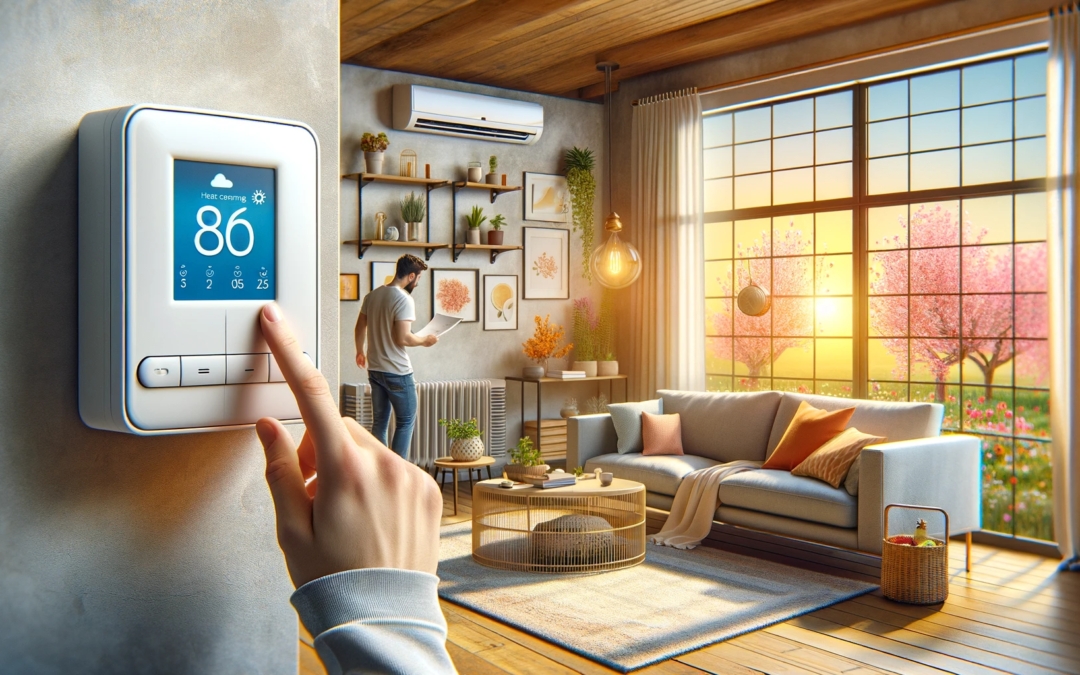As Pennsylvania bids farewell to the chilly winter months and welcomes the blossoming warmth of spring, it’s time for homeowners to turn their attention to their HVAC systems. Transitioning from heating to cooling isn’t just a simple switch on the thermostat; it requires a thoughtful approach to ensure your system runs efficiently and effectively throughout the warmer seasons. This guide will navigate you through the essential steps to smoothly make the switch, guaranteeing your home’s comfort and your system’s longevity.
Understanding Your HVAC System
HVAC systems in most Pennsylvania homes are designed to handle both heating and cooling demands. Understanding how your system functions in different modes is key to a successful transition. During the heating season, your system works to bring in and heat the air inside your home. In cooling mode, it does the opposite, removing warm air and replacing it with cooler, conditioned air. Properly transitioning your system helps prevent undue stress and wear, which can lead to breakdowns or inefficient operation.
Preparing for the Switch
1. Air Filters: Clean or Replace
Start with the basics: air filters. Dirty or clogged filters restrict airflow, reducing your system’s efficiency and degrading indoor air quality. Replace or clean your filters (depending on the type) to ensure smooth operation. This is particularly important in the spring when allergens are high.
2. Indoor and Outdoor Unit Maintenance
Check both your indoor and outdoor units. Remove any debris, leaves, or dirt that may have accumulated around the outdoor unit. For the indoor unit, ensure that the vents are clean and unobstructed. This ensures optimal airflow and cooling efficiency.
3. Ductwork Inspection
Inspect your ductwork for any signs of leaks, damage, or blockages. Leaky ducts can significantly reduce your system’s efficiency by allowing cool air to escape. Sealing and repairing ductwork is essential for maintaining efficiency and performance.
4. Thermostat Testing
Test your thermostat by switching it to cooling mode and setting it to your desired temperature. Watch for how the system responds. If there are issues like delayed start-up or no start-up, you might need to investigate further or call a professional.
Energy Efficiency Tips
With warmer weather, energy efficiency becomes a key consideration. Here are a few tips to keep your cooling costs down:
Use window treatments to block out heat during the day.
Set your thermostat to a comfortable but higher temperature when you’re not home.
Consider using ceiling fans to circulate air, allowing you to set a higher thermostat setting without discomfort.
Professional Maintenance
Annual professional maintenance is crucial for your HVAC system, especially during the transition from heating to cooling. A professional technician will inspect your system, perform necessary cleanings, check refrigerant levels, and ensure everything is functioning optimally. This not only prepares your system for the demands of the warmer months but also helps identify potential issues before they become costly repairs.
Common Issues and Troubleshooting
As you make the switch, be aware of common issues like strange noises, short cycling, or inadequate cooling. These could be signs of underlying problems. If simple troubleshooting doesn’t resolve the issue, it’s best to call in a professional.
Conclusion
Transitioning your HVAC system from heating to cooling is a vital step in preparing for the warmer months in Pennsylvania. By following these steps, you ensure that your system is ready to provide efficient and effective cooling, keeping your home comfortable and your energy bills in check. Regular maintenance, both DIY and professional, will extend the life of your system and help avoid unexpected breakdowns. Get ready to enjoy a cool and relaxing summer with your well-maintained HVAC system!

